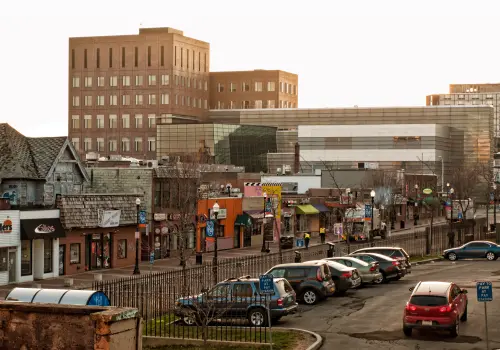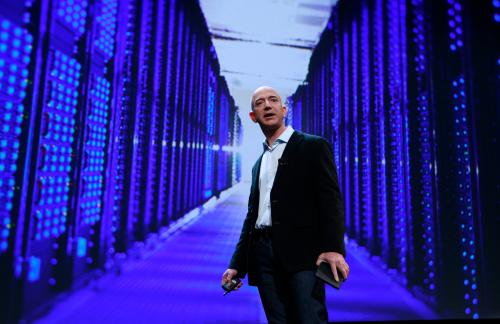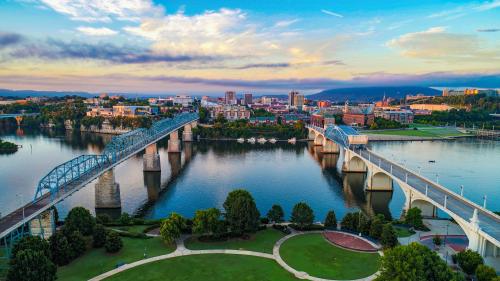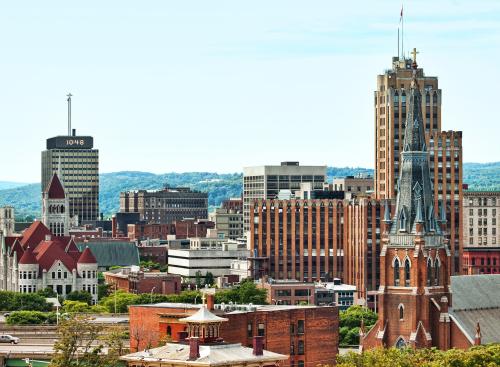This article was originally published on City Lab.
City leaders do a shocking disservice to their citizens and their city if they give Amazon a free ride by offering incentives packages that solely reduce the firm’s costs. There are things they can and should do to advocate for their constituents’ interests.
The mayors and civic leaders in the 20 places that made the cut to host Amazon’s second headquarters, known as HQ2, are boasting with pride and understandably so. In one of the highest-profile corporate site selection competitions in history, and against hundreds of competitors, an iconic tech firm has validated their communities as hubs of talent, innovation, and quality living.
The competition now intensifies, with cities under immense pressure to bring their best game. The prize is seductive: An innovative firm with 50,000 knowledge workers that will cement a region’s place in the digital economy. At the same time, leaders are bracing for an inter-state competition that could shatter incentives records and test their resolve to deliver inclusive economic growth.
This is the box in which cities find themselves: Can they effectively lure Amazon in ways that benefit the whole community, not just Amazon?
Megadeals for tech firms might become the new norm. How local leaders approach the competition for HQ2 will set the stage for future corporate bids.
For all the excitement, landing HQ2 could have a polarizing effect. Tens of thousands of jobseekers will likely flood the city, making it harder for the new jobs to be filled by local residents. New investments will drive up housing costs, displace low-income families, strain the transportation network, and widen the gap between rich and poor residents, if Seattle’s experience is any guide. The candidate cities will also dole out large sums of tax-payer subsidies for this growth and inequality, subsidies that I have criticized as highly inefficient and ineffective. While some commentators like Richard Florida are calling for the shortlisted cities to forge a no-subsidy pact, an ideal outcome, the unfortunate reality is that incentives will remain, undermining the merits of the opportunity.
Amazon’s search for a new headquarters may be followed by other global companies, like Apple, seeking to make major investments in the United States spurred by newly favorable tax conditions. Megadeals for tech firms might become the new norm. How local leaders approach the competition for HQ2 will set the stage for future corporate bids.
Local leaders should seek a deal with Amazon that results in a win-win, not a win-lose, proposition for the company and local residents. This scenario may not be far-fetched, as Amazon will want to emerge from this high-visibility search in good standing. They will want to arrive in a new city with trust, not community opposition.
With that in mind, here are three ways that city leaders can promote—and their constituents should urge—a mutually beneficial partnership with Amazon in this next phase of competition:
Rework the subsidy package to include community investments, not simply tax breaks that subsidize Amazon’s bottom line
Some states have already offered incentives packages that cover all or more than the $5 billion that Amazon has pledged to invest. City leaders do a shocking disservice to their citizens and their city if they give Amazon a free ride by offering incentives packages that solely reduce the firm’s costs. Instead, they could require Amazon to commit to hosting internships and apprenticeships, with classroom instruction and credentials provided by area universities and community colleges, in exchange for their tax abatements, similar to requirements embraced by firms participating in Portland’s Enterprise Zone (E-Zone).
Local leaders could set aside a portion of the revenues from Amazon’s tax abatements to finance specific community benefits, like a new Transit and Mobility Fund proposed by Columbus, Ohio or a Business Development and Workforce Training Fund created from Portland’s E-Zone. These community investments—to expand public transit and improve workforce development—are critical to Amazon HQ2’s long-term viability.
Design programs that share the costs—and maximize the benefits—of Amazon HQ2 regionally
While Amazon will choose one specific location for its headquarters, neighboring municipalities will feel the ripple effects of 50,000 new workers in their housing markets, infrastructure networks, and educational systems. To anticipate these changes, local leaders could create a regional fund that uses the revenue from the increased value in land around the headquarters to directly improve community services.
This district could be drawn wide enough to capture property tax revenues from increased values within and beyond the Amazon campus, and it could offset these price increases by investing all or a portion of that revenue into affordable housing, homeownership assistance, transit expansion, or digital skills training programs so that residents from across the region can benefit from the newfound growth. This fund would also ensure that rising property values benefit neighboring jurisdictions so they can better serve as partners in meeting region-wide housing, transit, and workforce needs.
Make compelling cases for potential HQ2 sites in emerging neighborhoods
In preparing bids for Amazon, local leaders identified many different sites that might be suitable for HQ2: Chicago’s bid, for instance, included 10 sites ranging from office towers near the Loop to suburban office parks to industrial areas on the city’s south and west sides. With Amazon officials coming to town for site visits, economic development leaders might feel compelled to showcase only their “best” sites in trendy locations. But they also ought to articulate why sites in emerging parts of the city, where transformative investment could catalyze wider opportunities for residents, deserve consideration. To make the case that these sites benefit Amazon, too, neighborhood leaders should participate in Amazon site visits to provide evidence of these communities’ assets and articulate how they will partner with Amazon to make HQ2 a success in such locations.
With so much at stake, now is the time to resist pressures to give away the bank and instead articulate a vision for how Amazon can help contribute to an innovative, inclusive region.
The Brookings Institution is committed to quality, independence, and impact.
We are supported by a diverse array of funders. In line with our values and policies, each Brookings publication represents the sole views of its author(s).






Commentary
How cities can strike a win-win deal for Amazon HQ2
February 6, 2018